Vooroordelen en AI - wat is het probleem?
In een wereld die steeds meer wordt aangedreven door kunstmatige intelligentie (AI) is de belofte van efficiëntie, innovatie en vooruitgang onmiskenbaar. Onder de oppervlakte vormt vooroordeel echter een belangrijke uitdaging.
Naarmate we ons meer verdiepen in algoritmen over machinaal leren en geautomatiseerde besluitvormingssystemen, roept het spookbeeld van vooroordeel cruciale vragen op over eerlijkheid, gelijkheid en verantwoording.
Welkom bij deze blog, waar je een reis maakt door de wereld van AI en vooroordelen. We zullen de complexiteit van bias binnen AI-systemen verkennen en laten je zien hoe het verschillende vormen aanneemt en welke impact het heeft. Maar deze blog draait niet alleen om het begrijpen van vooroordelen; het doel is om je de kennis en inzichten te bieden die je nodig hebt om dit snel veranderende technologische terrein te begrijpen en te navigeren.
Terwijl je je verdiept in de komende artikelen, krijg je een beter inzicht in de ingewikkelde wisselwerking tussen AI en vooroordelen. Van het verkennen van praktijkvoorbeelden tot het onderzoeken van de onderliggende mechanismen die vooroordelen in AI-algoritmen veroorzaken, deze blog is samengesteld om uw perspectief te verbreden en bewustzijn te verdiepen.
Maar bewustzijn alleen is niet genoeg. In een wereld waarin AI-systemen een ongekende invloed hebben in verschillende sectoren, is waakzaamheid van het grootste belang. Via deze blog ontdek je praktische strategieën en bruikbare inzichten om vooroordelen in AI te beperken, of je nu een ontwikkelaar, beleidsmaker of gewoon een betrokken burger bent.
Ga mee op verkenningstocht door de wereld van AI en vooroordelen. Laten we de complexiteit ontrafelen, de normen uitdagen en streven naar een toekomst waarin AI echt de waarden van eerlijkheid, transparantie en inclusiviteit weerspiegelt.
Hoewel deze introductie in het Nederlands is geschreven, is de rest van de blog in het Engels. In verband met het vele gebruik van Engelse onderzoeken, bronnen en terminologieën die relevant zijn voor het onderwerp.
Observing bias in AI
In today's digital world, artificial intelligence (AI) is everywhere, shaping how we live and work. But there's a problem lurking beneath the surface.
Take a moment to observe these images.


Which of the two people do you believe is more likely to commit another crime? Looking at the criminal record you would say Dylan right? Well AI thinks differently. According to software that is being used in real life Bernard Parker has a higher chance to reoffend.
The software used in this example is called COMPAS (Correctional Offender Management Profiling for Alternative Sanctions). It’s used in the justice system to predict if someone will commit another crime and decides their sentence.
A 2016 ProPublica investigation found that the COMPAS algorithm (One of the most widely used AI-powered tools in the criminal justice system) was twice as likely to falsely flag black people as high risk compared to white people. This highlights a big problem - bias in AI. Sadly, these biases happen a lot. Although this example dates back to 2016, it remains relevant in illustrating how biases can infiltrate AI systems. Despite changes since then, similar issues persist. Data bias is a root cause, leading to unequal consequences in areas like criminal justice, loan approvals, and recruitment.
Moving towards fairness and equality
As AI becomes more common in your life, it's crucial to make sure it's fair and equal for everyone. But how do you make sure you are not being influenced by the biases of AI and how can you be certain you are aware of all the biases? First of all you need to know where bias tends to sneak in.
Areas of concern
Besides bias in the criminal justice system, where we saw it in risk assessments like with Bernard Parker, biases in AI also show up in different places:
Healthcare: AI diagnostic systems can be biased in diagnosing and treating patients. When the data used to train these systems mostly comes from one group, they might not work as well for other groups.
Hiring: AI algorithms can show bias based on gender and race. Bloomberg News ran a test using fake names and resumes, finding that GPT 3.5 favored certain demographics. This raises concerns about unfair hiring. We need to be careful when using AI in recruitment to ensure fairness.
Facial Recognition Software: Facial recognition software can be less accurate for people with darker skin tones, leading to mistakes and unfair treatment.
Loan Approvals: AI systems for loan approvals may unfairly deny loans to people from certain communities, making economic inequality worse.
These examples show why it's important to closely examine and regulate AI technologies. As AI becomes more common in everyone’s lives, we need to work towards fairness, equality, and accountability in how it's used.
Keeping up with the rapid changes in AI
Bias in AI is a big issue but AI changes rapidly and improvements are being made. More attention is being given to making algorithms fair. Researchers are working on ways to reduce bias and governments are making stricter rules concerning AI. On March 13, 2024, the European Parliament approved the Artificial Intelligence Act (AI Act). The AI Act sets rules to ensure AI is safe and fair. It bans harmful AI uses like using facial recognition without permission or making biased algorithms. Companies must follow strict rules, like explaining AI decisions and having human oversight. It's all about using AI responsibly and protecting people. EU countries have to follow these rules, or they'll get fined. This means things are slowly improving. But how can you as an individual help speed up this improvement process?
Increasing awareness: Tips for individuals
- Educate yourself: Learn how AI works to spot biases better by following reputable sources, reading research papers, and engaging in online discussions. Platforms like OpenAI offer insights into the basics of AI, while Partnerships on AI provides extensive resources on bias in AI. Consider exploring online courses and workshops offered by organizations like the Algorithmic Justice League which also offers the documentary “Coded bias” for a deeper dive into this critical issue. Remember to stay updated, as AI changes rapidly
- Use diverse data: Look at different sources and perspectives and interact with different AI systems. Exposing yourself to diverse viewpoints can help you recognize biases and avoid echo chambers. Use AI systems that are working hard on being as fair and equal as possible like Copilot.
- Give feedback: Provide feedback when encountering bias in AI systems, to help machines learn and improve. You can do this by using feedback options offered by AI platforms or by directly contacting developers. You can also go to Algorithmic Justice League where you can report biases in AI. They focus on identifying and addressing bias in AI.
- Try Let’s play equal: Playing the game "Let’s Play Equal" can increase awareness of biases. It serves as a true eye-opener to the biases that exist.
- Be critical: Be critical about the results or recommendations provided by AI systems. Ask yourself why certain suggestions are made and consider whether they could be influenced by biases. When using data make sure the data is representative of the whole population. If you’re unsure about the data’s reliability seek information from trustworthy sources.
- Participate in discussions: Join conversations about AI ethics and bias to raise awareness in your community. Engage with AI Ethics Groups: Search online for research institutions, universities, or independent organizations working on AI ethics. Share your experience in relevant online communities. Here are some examples of groups, stories about ethics in AI to get you started:
Ethics of Artificial Intelligence
International Group of Artificial Intelligence
- Reflect on your own biases: Finally, take time to reflect on your own biases and how they might influence your interactions with AI systems. Being aware of your biases can help you approach AI technology with a more critical and informed perspective.
By following these tips and paying attention to AI biases, you will become more informed and are able to help make sure AI is used in a fair and responsible way.
At Greenjobs.nl, we believe in the importance of fair and equal treatment for all. When posting job opportunities, it is our priority to ensure that everyone feels welcome and included in the hiring process. If you're interested in exploring our current job listings and joining our inclusive community, you can visit our website at greenjobs.nl.
Some more sources used in this blog:
Did you like this blog? Then maybe these blogs are also something for you:







